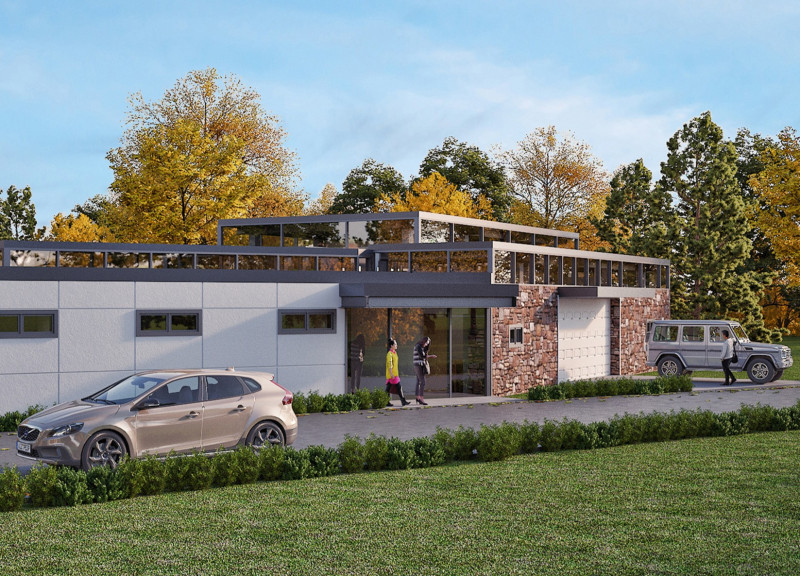5 key facts about this project
The Ozolini Teamakers Guest House is located in Latvia, combining the old and the new in its design. It serves as both a place for tea production and accommodation. The project places a strong emphasis on sustainability by reusing existing structures, creating a thoughtful interaction between public and private areas. The design is anchored by the original 1850 stone barn walls, which enhance the building's thermal mass and energy efficiency.
Public Spaces
The living room, along with three workshops dedicated to tea making, drying, and packing, makes up the public areas housed within the stone walls. These workshops connect with one another, encouraging movement and interaction among guests. They also open to the living room and outdoor spaces. A roll-up door at the tea drying room enhances the link between inside and outside, promoting natural ventilation and inviting the landscape into the building.
Transition Areas
The kitchen and lobby form essential transition points in the guest house, linking the historical elements with more modern features. The lobby includes a middle stone wall that incorporates a clearstory skylight. This design change allows natural light to fill the corridor connecting public and private spaces. It enhances the overall visual experience while keeping a consistent theme throughout the guest house.
Private Spaces
The guest house includes three bedrooms and restrooms in its private section, which is part of the newer construction. This area is positioned at an angle to accommodate the adjacent road to the west, ensuring guests maintain their privacy. Unlike the public spaces where architectural systems are visible, these private areas conceal their systems. The design here focuses on comfort and seclusion, offering a more intimate experience for guests.
Design Details
Educational aspects in public areas contribute to the guest house's appeal. Exposing systems such as columns and ducts allows visitors to understand the building's structure and the factors that enhance comfort. The combination of preserved historical features and modern architectural elements creates a strong connection with the surrounding landscape. Clearstory windows frame the views of the forest and bring natural light deep into the interior, creating a calm and inviting atmosphere.


























